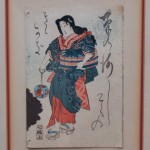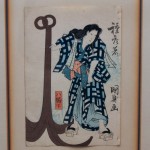Bijin-ga (美人画) literally means “picture of beautiful person”. They originate in the woodblock prints of the Edo era, and typically depicted beautiful women from various walks of life – from everyday women doing everyday things to famous courtesans reclining in luxurious surroundings. Many famous artists produced bijin-ga prints; some of the most well-known being Utagawa Kunisada, Kitagawa Utamaro, and Tsukioka Yoshitoshi.
Around the transitional period from late Meiji through Taisho into early Showa era, artists such as Jun’ichi Nakahara, Yumeji Takehisa, and Katsuji Matsumoto‘s modern styles made an enormous impact on traditional bijin-ga and produced works that helped form the flowery, large-eyed shoujo manga aesthetic as we know it.
With the advent of more modern printing technologies and digital painting, art has become more accessible than ever before. There are incredible modern artists out there today producing breathtaking works that continue to challenge the way we think of traditional Japanese art of gorgeous women. These are the sorts of artists I’m going to focus on. I urge you to check out their galleries, follow them on social media, and buy their prints to support them if you can.
While these featured artists are all incredibly versatile and do portraits of women in kimono and modern clothes as well as floral studies and still-lifes, I chose to focus on kimono-clad beauties to keep with the spirit of bijin-ga.
This entry will be long and image-heavy, so please click through to keep reading! Continue reading















 Bebe Taian
Bebe Taian CHOKO Blog
CHOKO Blog Gion Kobu
Gion Kobu